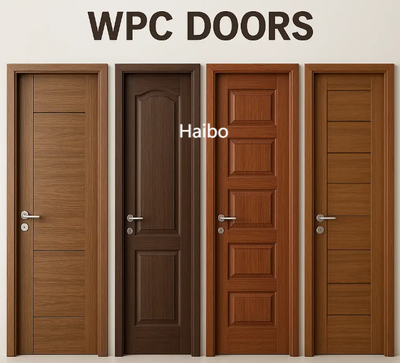From Fiber to Finish: The Next Generation of Rigid WPC Door Mat
-
In modern manufacturing, rigidity and stability are two of the most important metrics determining a door’s performance. For a professional WPC Door Factory , developing doors that remain dimensionally stable under temperature and humidity variations has become a major focus. Traditional wood–plastic composites already offer a balance of flexibility and resistance, but new formulations and composite blends are further improving structural rigidity—resulting in doors that perform more consistently over long-term use.
The Role of Composite Blends in Structural Performance
The rigidity of a WPC door depends on the interaction between polymer matrices and wood fiber reinforcement. Early generations of WPC materials often suffered from micro-voids and inconsistent fiber dispersion, which reduced stiffness over time. To address these issues, recent developments have focused on hybrid composite systems, where polymer bases are strengthened with inorganic fillers and modified coupling agents.
Materials such as glass fiber, calcium carbonate, and basalt micro-particles are now used in controlled ratios to enhance the stiffness-to-weight ratio. These additives improve internal cohesion, reducing the risk of deformation under heat or mechanical stress. Furthermore, improved coupling agents help bond wood fibers and polymers more effectively, ensuring the composite behaves as a single, unified structure rather than a blend of separate elements.
Real-World Application: Office Renovation in a Humid Region
A recent case study from a large coastal office renovation illustrates these principles in practice. The facility required doors capable of withstanding high humidity levels without warping or swelling. The contractor selected a WPC composite formulation that incorporated 5% short glass fiber and treated calcium carbonate as reinforcement.
After 18 months of use, the doors maintained excellent shape stability, even in areas without consistent climate control. Performance testing recorded a 30% improvement in flexural strength compared to the previous generation of WPC doors used in the same project five years earlier. The facility’s maintenance team also noted easier hinge alignment retention—an indicator of improved rigidity and dimensional consistency.
Practical Guidance for Selecting Rigid WPC Doors
Ask for data on material composition. Understanding whether the WPC includes inorganic reinforcements or modified resins helps predict rigidity performance.
- Evaluate flexural and tensile properties. Request independent test results following ASTM D790 or ISO 178 standards for rigidity comparisons.
- Match material to environment. For humid or high-temperature conditions, choose blends with low water absorption and high heat deflection temperature.
- Inspect internal structure design. Some advanced doors include honeycomb or ribbed reinforcements within the WPC core to further increase stiffness without adding weight.
- Consider installation tolerance. Even the most rigid composites benefit from proper frame alignment and temperature-acclimated installation.
By considering these factors, designers and builders can specify materials that combine rigidity, dimensional stability, and longevity. As composite technology continues to evolve, the WPC door stands as a strong example of how intelligent blending and reinforcement design can elevate material performance. For more insights on modern door engineering and practical applications, visit https://www.haibodoor.com/ .
